Here are some resonant-capacitor-inductor-Rdampen screen shots.
Rdampen is 1 milliOhm in the first screen-shot (the R in each of the 4 LRC is 1 milliOhm).

The following screen shot has all the dampening Resistors be 10 milliOHms.
Notice the higher frequency peaks are NOT AFFECTED. You'll need more than
10 milliOhms (either lumped or ESR inside the cap or trace) for 10nH and 100pF.
Notice that resonance at 150MHz brings up the energy from -25dBc to +5dBc

Your Question was "What is the longest thinnest trace"? Depends on the inductance you can tolerate.
Traces over air (no underlying plane) have about 1nH/millimeter or 25 nH/inch.
There is mild dependency upon width. [its a log(1 + length/width) ]
Traces over planes have about 0.1nH/millimeter, depending on distance from trace to plane. Thus an underlying plane (GND or VDD or otherwise) will raise the resonant frequency by sqrt(10) or 3.16X. Be aware of that.
What can you get away with? Clearly, as you are already aware, you have at least 3 degrees of Freedom: capacitor value, trace inductance, and losses due to
ESR or trace. A mere 10 squares of trace (0.08" long, 0.008" wide) has, at 500uOhm per square, an Rdampen value of 5 milliOhms.
Thus many crimes of this nature are hidden under the Rdampen of the traces and Vias.
How to pick Rdampen? Use the (tiny) formula Rdampen = sqrt( L / C ).
Thus 100uF and 10nH, which is the left-most LRC shunt circuit in each screen-shot, needs Rdampen of sqrt( 10nH / 100uF) = sqrt(1e-8 / 1e-4) = sqrt(1e-4)
and for that left-most LRC, use Rdampen of 1e-2 = 0.01 ohm = 10 milliohm.
Does this value of 10milliOhm suffice? At 1milliOhm, the dip at 160Khz is -93dB.
At 10 milliohm, that dip has risen (been dampened) to -74dB and is quite broad.


